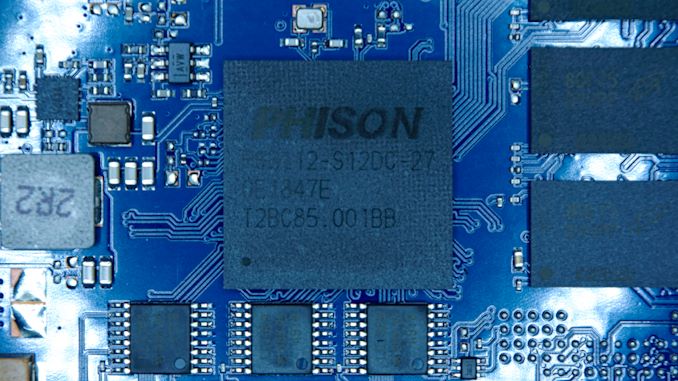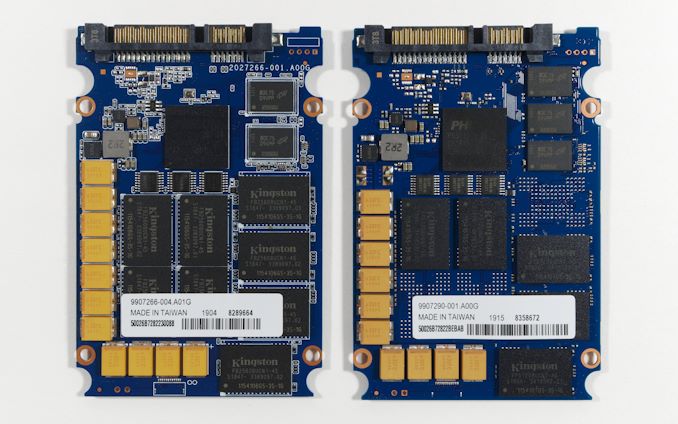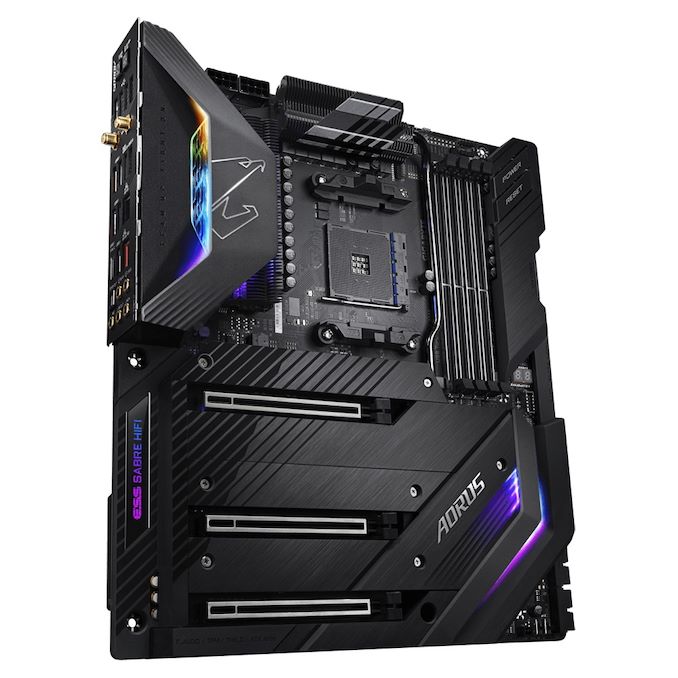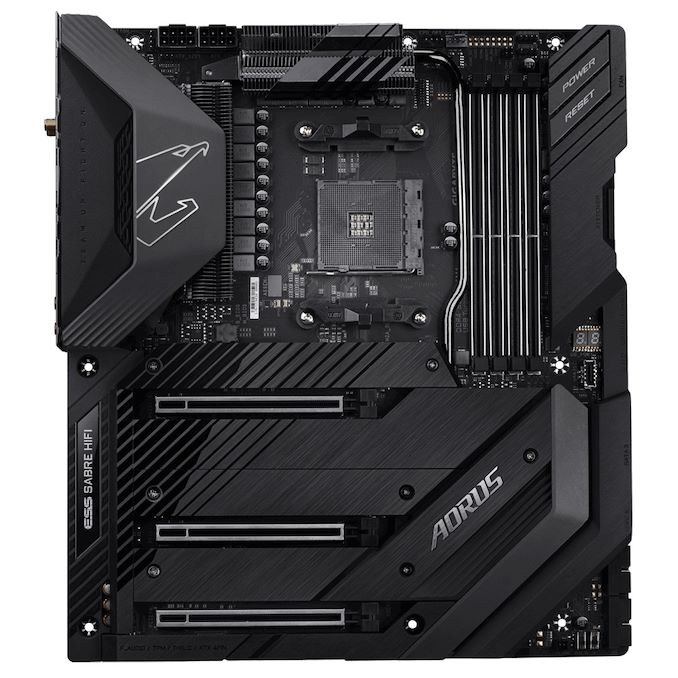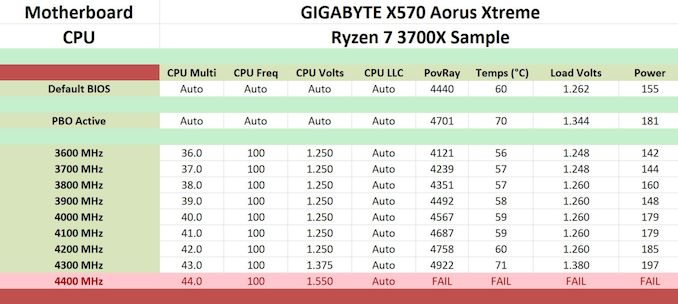CODE VEIN Free Download PC Game pre-installed in direct link. CODE VEIN was released on Sep 26, 2019
About The Game
Team up with an AI partner or a friend in co-op multiplayer and venture out into a world of destruction in this story driven connected dungeon experience. Use your combined strength to coordinate your approach and defend each other from surprise attacks or tackle overpowered enemies. Acquire new gear, level up your character, and become more powerful to rise up against the Lost. From new players to seasoned action game veterans, the challenges in CODE VEIN will keep you coming back for more. Choose from various weapons such as bayonets, axes, spears, and more. Enhance your character’s abilities with powerful Blood Code enhancements, each with access to various “Gifts” that can increase your strength, weaken enemies, and can allow you to utilize new weapon abilities or access overpowered attacks. Finish off your opponents with your Blood Veil, powerful blood draining tools, each with their own unique visual and attack style that opens up a myriad of new combat strategies. Team up and embark on a journey to the ends of hell to unlock your past and escape your living nightmare in CODE VEIN. Death may feel permanent but your loadout doesn’t have to. Change your character class at any time, unlock the ability to mix and match skills, or choose different NPCs to partner with, all of which could make the difference between life and death.
How to Download & Install CODE VEIN
- Click the Download button below and you should be redirected to UploadHaven.
- Wait 5 seconds and click on the blue ‘download now’ button. Now let the download begin and wait for it to finish.
- Once CODE VEIN is done downloading, right click the .zip file and click on “Extract to CODE.VEIN.zip” (To do this you must have WinRAR, which you can get here).
- Double click inside the CODE VEIN folder and run the exe application.
- Have fun and play! Make sure to run the game as administrator and if you get any missing dll errors, look for a Redist or _CommonRedist folder and install all the programs in the folder.
CODE VEIN Free Download
Click the download button below to start CODE VEIN Free Download with direct link. It is the full version of the game. Don’t forget to run the game as administrator.
NOTICE: This game is already pre-installed for you, meaning you don’t have to install it. If you get any missing dll errors, make sure to look for a _Redist or _CommonRedist folder and install directx, vcredist and all other programs in that folder. You need these programs for the game to run. Look for a ‘HOW TO RUN GAME!!.txt’ file for more help. Also, be sure to right click the exe and always select “Run as administrator” if you’re having problems saving the game. Always disable your anti virus before extracting the game to prevent it from deleting the crack files.
System Requirements
- Requires a 64-bit processor and operating system
- OS: Windows 7 SP1 or Windows 10 (64-bit)
- Processor: Intel Core i5-2300
- Memory: 6 GB RAM
- Graphics: GeForce GTX 760 or Radeon HD 7850
- DirectX: Version 11
- Storage: 35 GB available space
- Sound Card: DirectX compatible soundcard or onboard chipset
Screenshots
CODE VEIN Free Download
The Surge 2 Free Download PC Game pre-installed in direct link. The Surge 2 was released on Sep 23, 2019
About The Game
On the way to Jericho City, your plane is shot down by a mysterious storm and crash-lands in the outskirts. You wake up weeks later in a derelict detention facility inside the city. Armor-clad soldiers enforce Martial Law, robots are on a rampage, and a dark, expanding nanostorm looms over the cityscape. In a bid to survive, explore the sprawling, devastated city of Jericho. Fight its numerous, ferocious threats in brutal, unforgiving combat, slashing and tearing the limbs off your opponents to steal valuable equipment that will make you stronger – strong enough to face the most fearsome, imposing foes lurking in the city. With an expanded arsenal of weapons, armors, abilities, implants, and drones to build your character, and a bigger, more varied and more ambitious world, The Surge 2 challenges you to survive and unravel its hidden secrets.
How to Download & Install The Surge 2
- Click the Download button below and you should be redirected to UploadHaven.
- Wait 5 seconds and click on the blue ‘download now’ button. Now let the download begin and wait for it to finish.
- Once The Surge 2 is done downloading, right click the .zip file and click on “Extract to The.Surge.2.zip” (To do this you must have WinRAR, which you can get here).
- Double click inside the The Surge 2 folder and run the exe application.
- Have fun and play! Make sure to run the game as administrator and if you get any missing dll errors, look for a Redist or _CommonRedist folder and install all the programs in the folder.
The Surge 2 Free Download
Click the download button below to start The Surge 2 Free Download with direct link. It is the full version of the game. Don’t forget to run the game as administrator.
NOTICE: This game is already pre-installed for you, meaning you don’t have to install it. If you get any missing dll errors, make sure to look for a _Redist or _CommonRedist folder and install directx, vcredist and all other programs in that folder. You need these programs for the game to run. Look for a ‘HOW TO RUN GAME!!.txt’ file for more help. Also, be sure to right click the exe and always select “Run as administrator” if you’re having problems saving the game. Always disable your anti virus before extracting the game to prevent it from deleting the crack files. If you need additional help, click here
System Requirements
- Requires a 64-bit processor and operating system
- OS: Windows 7/8/10 (64-bit)
- Processor: AMD FX-8320 (3.5 GHz) / Intel i5-4690K (3.5 GHz)
- Memory: 8 GB RAM
- Graphics: 2 GB, AMD Radeon R9 280 / NVIDIA GeForce GTX 950
- DirectX: Version 11
- Storage: 20 GB available space
Screenshots


The Surge 2 Free Download
Posted by : Admin
Kingston may not be a name that rolls off the tip of the tongue when you're talking about datacenter hardware vendors, but the company has come to have a major presence in datacenters through their DRAM modules. A lucrative and high-volume market on its own, the company has unspririsngly been attempting to pivot off of their success with datacenter DRAM into other datacenter products, but they've only met limited success thus far. Their other product lines – in particular enterprise/datacenter SSDs – have been servicable, but haven't been able to crack the market as a whole.
Still intent on slicing out a larger portion of the datacenter SSD market, Kingston has decided to raise their profile by introducing SSDs that are based around the needs of their existing DRAM customers. That means that the company's new DC500 family of SSDs is intended for second-tier cloud service providers and system integrators, rather than the top hyperscalers like Google, Microsoft, Amazon, etc. This also means that the new drives are SATA SSDs, because in this market segment – which relies more heavily on commodity components and platforms than Open Compute Project-style thorough customization – there is still significant demand for SATA SSDs.
Using NVMe SSDs adds to platform costs in the form of expensive PCIe switches and backplanes, the drives themselves are each more expensive than a SATA drive of the same capacity, and power efficiency is often better for SATA than NVMe. PCIe SSDs make it possible to cram a lot of storage performance into a smaller number of drives and servers, but where the emphasis is more on capacity and cost effectiveness, SATA still has a place.
The SATA interface itself is stuck at 6Gbps, but the technology that goes into SATA SSDs continues to evolve with new generations of NAND flash memory and new SSD controllers. Kingston's new DC500 family of enterprise SATA SSDs are our first look at Phison's new S12 SSD controller (specifically, the S12DC variant), the replacement for the S10 that has been on the market for over five years. (S11 is Phison's current DRAMless SATA controller.) While consumer SATA SSD controllers have mostly dropped down to just four NAND channels, the S12DC still has eight channels, but more for the sake of supporting high capacities than for improving performance. The S12DC officially supports 8TB, but Kingston isn't pushing things that far yet. The S12DC controller is fabbed on a 28nm process and brings major improvements to the error correction capabilities including Phison's third-generation LDPC engine.
The DC500 family uses Intel's 64-layer TLC NAND flash memory, a break from Kingston's usual preference for Toshiba NAND. 96/92-layer TLC has started to show up in the client/consumer SSD market, but it's still a bit early to be seeing it in this part of the enterprise storage market.
The DC500 family includes two tiers: the DC500R for read-heavy workloads (endurance rating of 0.5 DWPD) and the DC500M for more mixed read/write workloads (endurance rating of 1.3 DWPD). Kingston says the Intel NAND they are using is rated for about 5000 program/erase cycles, so with a warranty for a bit less than 1000 total drive writes on the DC500R they're clearly allowing for quite a bit of write amplification.
NVMe SSDs have mostly killed off the market for very high endurance SATA drives, because applications that need to support several drive writes per day tend to need higher performance than SATA can support (and as drive capacities increase, there's no longer enough time in a day to complete more than a few drive writes at ~0.5GB/s). Micron still offers a 5 DWPD SATA model (5200 MAX) but most other brands now top out around 3 DWPD for SATA drives. Those 3 DWPD and higher drives only account for about 20% of the market, so Kingston isn't missing out on too many sales by only going up to 1.3 DWPD with the DC500 family. The introduction of QLC NAND has helped lower the entry-level of this market down to around 0.1 DWPD, but Kingston doesn't have anything to offer at that level yet.
| Kingston DC500 Series Specifications | ||||||
| Capacity | 480 GB | 960 GB | 1920 GB | 3840 GB | ||
| Form Factor | 2.5" 7mm SATA | |||||
| Controller | Phison PS3112-S12DC | |||||
| NAND Flash | Intel 64-layer 3D TLC | |||||
| DRAM | Micron DDR4-2666 | |||||
| Sequential Read | 555 MB/s | |||||
| Sequential Write | DC500R | 500 MB/s | 525 MB/s | 525 MB/s | 520 MB/s | |
| DC500M | 520 MB/s | 520 MB/s | 520 MB/s | 520 MB/s | ||
| Random Read | 98k IOPS | |||||
| Random Write | DC500R | 12k IOPS | 20k IOPS | 24k IOPS | 28k IOPS | |
| DC500M | 58k IOPS | 70k IOPS | 75k IOPS | 75k IOPS | ||
| Power | Read | 1.8 W | ||||
| Write | 4.86 W | |||||
| Idle | 1.56 W | |||||
| Warranty | 5 years | |||||
| Write Endurance | DC500R | 438 TB 0.5 DWPD | 876 TB 0.5 DWPD | 1752 TB 0.5 DWPD | 3504 TB 0.5 DWPD | |
| DC500M | 1139 TB 1.3 DWPD | 2278 TB 1.3 DWPD | 4555 TB 1.3 DWPD | 9110 TB 1.3 DWPD | ||
| Retail Price (CDW) | DC500R | $104.99 (22¢/GB) | $192.99 (20¢/GB) | $364.99 (19¢/GB) | $733.99 (19¢/GB) | |
| DC500M | $125.99 (26¢/GB) | $262.99 (27¢/GB) | $406.99 (21¢/GB) | $822.99 (21¢/GB) | ||
The DC500R and DC500M are available in the same set of usable capacities ranging from 480GB to 3840GB, but they differ in the amount of spare area included, which is what allows the -M to have higher write endurance and higher sustained write performance. For sequential IO, the -R and -M versions are rated to deliver essentially the same performance, bottlenecked by the SATA link. The same is true for random reads, but steady-state random write performance is limited by the flash itself and varies with drive capacity and spare area. The DC500M models all have higher random write performance than all of the DC500R models.
Power consumption is rated at a modest 1.8 W for reads and a fairly typical 4.86 W for writes. Low-power idle states are usually not included on enterprise drives, so the DC500s are rated to idle at 1.56 W.
The DC500R and DC500M both use the same plain metal case, but the PCBs inside have some minor layout changes due to the differences in overprovisioning. Our 3.84TB samples feature raw capacities of 4096GB for the DC500R and 5120GB for the DC500M, so the -R versions have comparable overprovisioning to consumer SSDs while the -M versions have about three times as much spare area. The extra flash on the DC500M also requires it to have more DRAM: 6GB instead of the 4GB found on the DC500R 3.84TB.
Physically, the memory is laid out differently between the two drives. The 3.84TB DC500R has a total of 16 packages with 256GB each of NAND, and the 3.84TB DC500M uses 10 packages of 512GB each rather than mix packages of different capacities. In both cases this is Intel NAND packaged by Kingston. Since the -M has fewer NAND packages, it also gets away with fewer of the small TI multiplexer chips that sit next to the controller. The -M also has two fewer tantalum caps for power loss protection despite having more total NAND and DRAM.
The Competition
There are plenty of competing enterprise SATA SSDs based on 64-layer 3D TLC, but many of them have been on the market for quite a while; Kingston's a bit late to market for this generation. Samsung's SATA SSDs launched last fall are the only current-generation drives we have to compare against the Kingston DC500s, and all of our older enterprise SATA SSDs are far too outdated to be relevant.
The Samsung 883 DCT falls somewhere in between the DC500R and DC500M, with a write endurance of 0.8 DWPD (compared to 0.5 and 1.3 for the Kingston drives). The Samsung 860 DCT is a bit of an oddball since it lacks one of the defining features of enterprise SSDs: power loss protection capacitors. It also has quite a low endurance rating of just 0.2 DWPD, which is almost in QLC territory. Despite these handicaps, it still uses Samsung's excellent controller and firmware, and is tuned to offer much better performance and QoS on server workloads than can be expected from the client and consumer SSDs it superficially resembles.
To give a sense of scale, we've also included results for Samsung's entry-level datacenter NVMe drive, the 983 DCT, specifically the 960GB M.2 model. Some relevant SATA competitors that we have not tested include the Intel D3-S4510 and Micron 5200 ECO, both using the same 64L TLC as the Kingston drives but with different controllers.
Test System
Intel provided our enterprise SSD test system, one of their 2U servers based on the Xeon Scalable platform (codenamed Purley). The system includes two Xeon Gold 6154 18-core Skylake-SP processors, and 16GB DDR4-2666 DIMMs on all twelve memory channels for a total of 192GB of DRAM. Each of the two processors provides 48 PCI Express lanes plus a four-lane DMI link. The allocation of these lanes is complicated. Most of the PCIe lanes from CPU1 are dedicated to specific purposes: the x4 DMI plus another x16 link go to the C624 chipset, and there's an x8 link to a connector for an optional SAS controller. This leaves CPU2 providing the PCIe lanes for most of the expansion slots, including most of the U.2 ports.
| Enterprise SSD Test System | |
| System Model | Intel Server R2208WFTZS |
| CPU | 2x Intel Xeon Gold 6154 (18C, 3.0GHz) |
| Motherboard | Intel S2600WFT |
| Chipset | Intel C624 |
| Memory | 192GB total, Micron DDR4-2666 16GB modules |
| Software | Linux kernel 4.19.8 fio version 3.12 |
| Thanks to StarTech for providing a RK2236BKF 22U rack cabinet. | |
The enterprise SSD test system and most of our consumer SSD test equipment are housed in a StarTech RK2236BKF 22U fully-enclosed rack cabinet. During testing for this review, the front door on this rack was generally left open to allow better airflow, and some Silverstone FQ141 case fans have been installed to help exhaust hot air from the top of the cabinet.
The test system is running a Linux kernel from the most recent long-term support branch. This brings in about a year's work on Meltdown/Spectre mitigations, though strategies for dealing with Spectre-style attacks are still evolving. The benchmarks in this review are all synthetic benchmarks, with most of the IO workloads generated using FIO. Server workloads are too widely varied for it to be practical to implement a comprehensive suite of application-level benchmarks, so we instead try to analyze performance on a broad variety of IO patterns.
Enterprise SSDs are specified for steady-state performance and don't include features like SLC caching, so the duration of benchmark runs doesn't have much effect on the score, so long as the drive was thoroughly preconditioned. Except where otherwise specified, for our tests that include random writes the drives were prepared with at least two full drive writes of 4kB random writes. For all the other tests, the drives were prepared with at least two full sequential write passes.
Our drive power measurements are conducted with a Quarch HD Programmable Power Module. This device supplies power to drives and logs both current and voltage simultaneously. With a 250kHz sample rate and precision down to a few mV and mA, it provides a very high resolution view into drive power consumption. For most of our automated benchmarks, we are only interested in averages over time spans on the order of at least a minute, so we configure the power module to average together its measurements and only provide about eight samples per second, but internally it is still measuring at 4µs intervals so it doesn't miss out on short-term power spikes.
The Kingston DC500 Series Enterprise SATA SSDs Review: Making a Name In a Commodity Market
The introduction of the X570 chipset has heralded some of the most impressive and feature-rich desktop motherboards for an AMD platform in recent times. One prime example of this is the GIGABYTE X570 Aorus Xtreme which includes an Aquantia powered 10 G NIC, Intel's Wi-Fi 6 802.11ax wireless interface, and has support for up to three PCIe 4.0 x4 M.2 drives. Looking to live up to the Xtreme naming, there's a 16-phase power delivery with dual BIOS for the more extreme enthusiast, whereas users looking to create a clean looking RGB laden system will appreciate the right-angled 24-pin motherboard power input. The X570 Aorus Xtreme is also the only current motherboard to include a passively cooled chipset heatsink, with GIGABYTE looking to make its flagship model unique and to stand out from the crowd.
Taking Things to The Xtreme
One thing manufacturers have been good at in recent times is providing users with plenty of options which are segmented into multiple price segments. We typically consider boards one of three segments: the low-end which includes budget-focused boards, the mid-range which caters to users looking for a good mixture of good quality and useful features but at a somewhat affordable price point, and the high-end, which focuses on providing users with premium features with sometimes overkill componentry and accessory bundles that the majority of users aren't going to make the most of. At the high-end, there's usually a total disregard on the monetary value.
Motherboard such as the GIGABYTE X570 Aorus Xtreme, which we are reviewing today, are a prime example of a flagship model cramming as much function to give users a truly premium experience. Regardless of user requirements and price points, models such as this one aren't created with budget users in mind and look to set the standard in progressing motherboards to the point that in future chipsets, premium features such as upgraded networking, delivery, and more connectivity become the norm.
The X570 Aorus Xtreme as it stands is GIGABYTE's current flagship X570 model and looks to set the standard in a very crowded premium motherboard market. Each flagship model on the X570 chipset model can be judged on its own merits, but the X570 Aorus Xtreme is the only model in the entire X570 product stack to make use of a passively cooled chipset heatsink. That is, in itself, a big plus point for most users who want a high-end board. Most motherboard fans in the past are small and high-pitched, and GIGABYTE is leading the charge here.
Other impressive features include a 16-phase power delivery, which is operating in a 14+2 configuration. There are two 8-pin 12 V ATX CPU power inputs designed to input as much power to the CPU as possible. On the PCIe front there are two full-length PCIe 4.0 slots which operate at x16 or x8/x8, with the bottom-mounted third full-length slot locked down to PCIe 4.0 x4 from the chipset. Storage capabilities include three PCIe 4.0 x4 capable M.2 slots, while users of more wallet-friendly SATA drives can make use of six SATA ports with support for RAID 0, 1 and 10 arrays. It should be noted that using an M.2 drive in the bottom M.2 slot will disable two of the SATA ports.
Memory support is also impressive with support for up to DDR4-4400 and is capable of housing up to 128 GB across four RAM slots. Users can also use unbuffered ECC memory. For networking we have an Aquantia AQC107 10 GbE network controller alongside an Intel 1GbE controller, and an Intel AX200 802.11ax wireless interface that offers both Wi-Fi 6 and BT 5 connectivity. A Realtek ALC1220-VB HD audio codec and an assisting ESS Sabre 9218 DAC are designed to provide a good quality onboard audio solution.
Focusing on the aesthetics, GIGABYTE is using black armor to cover the bottom half of the motherboard to provide a subtle, but unformed look. This subtle look stretches to the rear panel cover, as well as extending from the chipset heatsink cover up to the top right-hand side of the board which incorporates power and reset switches into its design. This is an interesting design trait, aside from oodles of RGB LEDs across the clean-cut all-black motherboard. The right-angled 24-pin motherboard power input is also hidden, which is designed to provide a cleaner aesthetic and help with cable management issues.
In our system tests, we did experience an anomaly in our long idle power testing with the highest power draw of any AM4 board tested with our Ryzen 7 3700X. When it comes to our OS idle testing and with a Prime95 blend test, the results are more in line with what's expected and despite the copious amounts of premium controllers and RGB LEDs, the power draw at full load is very favorable. Our non-UEFI POST time test was competitive and in our short form CPU suite, its performance is very likeable to the GIGABYTE X470 Gaming 7 in our Handbrake and 7-Zip testing but remains highly competitive against over X570 models tested so far too. Performance in our game testing shows that things look competitive from GIGABYTE.
One of the primary aspects users will associate with an Xtreme branded motherboard is overclocking, and the GIGABYTE X570 Aorus Xtreme is one of the best suited AM4 boards tested so far. Not only does our thermal testing show the cooling solution equipped on the power delivery of the X570 Aorus Xtreme to be effective, but we saw no concerning temperature issues on the passively cooled X570 chipset heatsink. In our overclocking performance testing, we experienced very little VDroop on the CPU VCore with a slight 0.002 V drop at 3.6 GHz and 3.7 GHz, and a slight overcompensation of 0.01 V from 3.8 to 4.2 GHz. Even at our highest achievable clocks of 4.3 GHz on our Ryzen 7 3700X testbed CPU, and even then with default settings other than changing the CPU frequency and CPU VCore voltage yielded an extra 0.01 extra on top of our 1.375 CPU VCore value we set within the BIOS. Another interesting thing of note was when we activated Precision Boost Overdrive in the BIOS, we saw the improvement in our Pov Ray testing - making the Xtreme the first X570 motherboard we've tested so far to make a noticeable and positive difference with PBO enabled.
Looking at the market, each of the major vendors has a flagship model in a similar price bracket. The odd one out is the ASRock X570 Aqua, which is a limited edition model with a combined chipset and CPU heatsink. For the rest, the main competition to the GIGABYTE X570 Aorus Xtreme ($700) is the MSI MEG X570 Godlike ($700) which we have already reviewed, and the ASUS ROG Crosshair VIII Formula ($700). Each has its own merits to be judged on, and in the case of the X570 Aorus Xtreme, GIGABYTE has put real effort into standing out from the crowd with a passively cooled chipset heatsink which overall might seem insignificant, but it makes a bold statement that it has the capabilities to tame the hot X570 chipset without the need of a cooling fan. Other important inclusions are the upgraded networking capabilities with a 10 G NIC and Wi-Fi 6 802.11ax wireless interface pairing leading the charge, and the efficiently cooled and powerful 14+2 phase power delivery which is impressive.
The GIGABYTE X570 Aorus Xtreme Motherboard Review: Fanless AM4
Posted by : Admin
Best WordPress hosting services 2020 in the table below. Logo Plan Price/ month Features Support View Full Review Basic $2.95/mo. 1...











